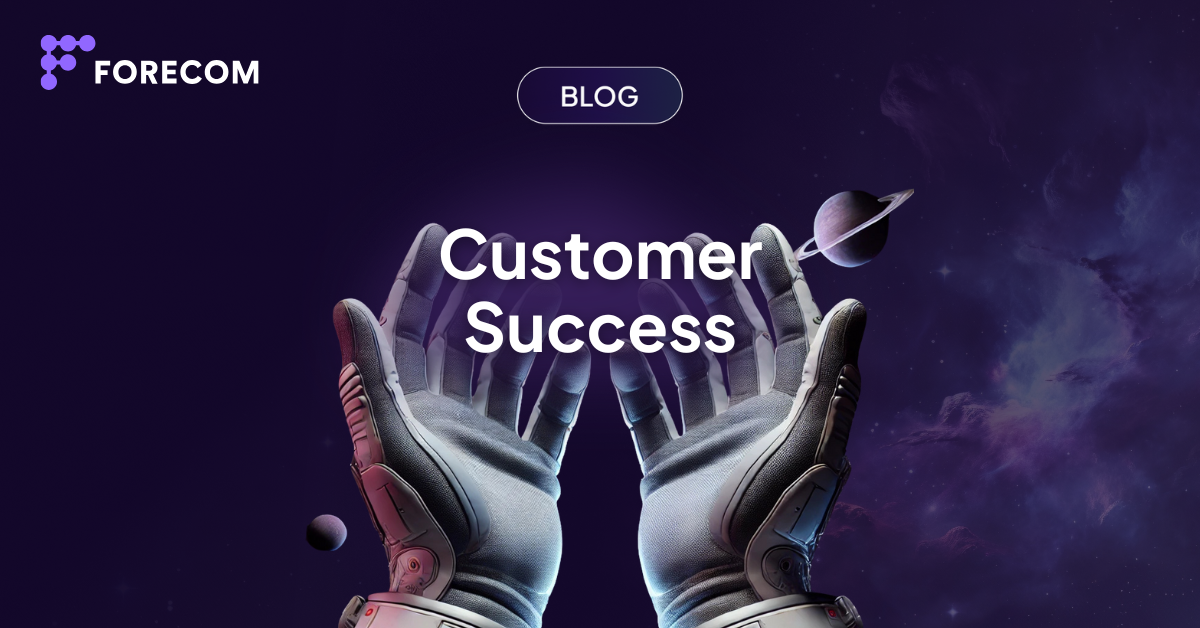This article will delve into the meteoric rise of chatbots, shedding light on their growing prevalence in marketing and customer service, and exploring how they are shaping the future of customer engagement in an increasingly connected world.
Content
Introduction
In today's rapidly evolving digital landscape, businesses are constantly seeking innovative solutions to enhance customer experience and streamline their operations. One such groundbreaking technology that has been making waves in the marketing and customer service domains is the advent of chatbots.
These intelligent, AI-driven conversational agents are transforming the way businesses interact with their customers, providing instant support, personalized experiences, and fostering strong brand relationships.
Advantages of Chatbots
Handling a Large Volume of Inquiries
The capability to manage a vast amount of inquiries at once is a significant advantage of their use. They are available 24/7, because of that, they can provide customers with instantaneous answers to their inquiries, irrespective of the day or time. As a result, businesses can enhance their responsiveness and minimize waiting times, which can lead to better customer satisfaction and therefore increased revenue.
Saving Time and Resources
They can automate repetitive tasks such as answering frequently asked questions, handling order tracking, and providing product recommendations. By automating these tasks, businesses can empower their employees to concentrate on higher-level, strategic tasks, enabling them to enhance their productivity and efficiency, and ultimately drive business growth.
Providing Personalized Assistance
Thanks to collecting data on customers' preferences, purchase history, and browsing behavior, chatbots offer tailored recommendations and suggestions that align with business interests and needs.
Enhancing Customer Service
Handling various types of customer inquiries, including complaints, troubleshooting, and technical support… all of these are chatbots capabilities, which can be very beneficial to your business. They offer quick and efficient solutions to these issues, without the need for human intervention, which can eventually lead to reducing response times and improving customer satisfaction, while also reducing the workload on customer service teams.
Gathering Valuable Customer Feedback and Insights
Feedback is one of the most valuable metrics for businesses and chatbots can help with its gathering. They constantly collect data about customer interactions and thanks to that, businesses can gain valuable insights into their customers' preferences, pain points, and behaviors.
Disadvantages of Chatbots
Chatbots offer numerous benefits, but they also come with certain drawbacks. They may struggle to understand complex queries, which may lead to customer frustration. Due to their lack of empathy and emotional intelligence, they may not effectively handle sensitive situations, which are better suited for human employees. Poorly designed chatbots can negatively impact a brand's reputation by providing unsatisfactory responses.
Moreover, Initial investment and maintenance costs can be considerable, and businesses should be prepared for ongoing updates and improvements. Finally, some customers may resist adopting chatbot interactions due to unfamiliarity with the technology or preference for human contact.
However, even after weighing all the drawbacks, the benefits of implementing chatbots into your business greatly outweigh the negatives, you just need to set a plan and goals that you expect from chatbots.
Implementation and Challenges
While they offer numerous benefits to businesses, implementing them can come with its own set of challenges. The top priority challenge might be ensuring that the chatbot is well-designed and user-friendly. It must be able to understand customer queries accurately and provide relevant responses promptly.
Another challenge is ensuring that the chatbot is properly trained and maintained. This requires ongoing monitoring and optimization of the chatbot's performance, including regular updates to the algorithms and training data. Additionally, businesses must ensure that they are secure and compliant with data privacy regulations.
Customer Acquisition
By engaging with potential customers in a conversational manner, chatbots can build rapport and guide them through the sales funnel. On social media, they can answer questions, offer product recommendations, and provide incentives for customers to make a purchase. They can also use customer data to provide personalized offers and promotions, increasing the chances of converting a potential customer into a paying one.
Apart from social media, they can also engage with visitors and provide assistance on your business's website. For instance, a chatbot can welcome visitors with a tailored message, provide product recommendations based on their browsing history or assist them in finding the information they need, ultimately enhancing the overall customer experience.
Brand Building
Through conversational engagement with customers, chatbots can cultivate a more personable and relatable brand image, akin to human interaction. They can also help businesses create a consistent brand voice across all channels, reinforcing brand identity and recognition.
Another way that they can build brand loyalty is by providing personalized assistance and recommendations. This virtual assistant could offer customized product recommendations based on a customer's preferences and browsing history, increasing the likelihood of a purchase.
It’s also important not to forget that they can help businesses collect feedback from customers and use this feedback to then improve their products and services. Listening to customers is crucial for having a successful business. By making changes based on customers feedback, businesses can demonstrate their commitment to customer satisfaction and build a loyal customer base.
Data Collection and Analysis
By engaging with customers in a conversational manner, they can collect valuable information on customer behavior, preferences, and pain points. This data can be used to analyze customer sentiment and inform marketing and product development strategies.
By engaging in conversations with customers, such as by conducting surveys and asking relevant questions, they can easily gather valuable customer data. For instance, a chatbot could inquire about customers' preferences for a specific product or service or gather feedback on their recent purchase experience. With such data, your brand could develop more effective marketing campaigns and also improve customer satisfaction.
Another way that they can collect data is by tracking customer interactions with them. By analyzing the conversations between the chatbot and the customer, businesses can gain valuable insights into customer behavior and preferences.
Multilingual Support
Chatbots can provide support in multiple languages, enabling businesses to serve customers in different regions and expand their global reach. Multilingual chatbots can help businesses overcome language barriers and improve their customer service, thereby increasing customer satisfaction and loyalty.
One way that they can provide multilingual support is by offering a language selection option at the beginning of the conversation. Customers can select their preferred language, and the chatbot will then provide assistance in that language. Alternatively, they can use natural language processing and machine learning to detect the customer's language automatically and provide assistance in that language.
Moreover, multilingual chatbots can be customized to reflect local cultural norms and preferences. For example, they can use appropriate greetings, slang, and humor to create a more personalized and engaging experience for customers, which is a simple, yet effective way how businesses can establish a stronger connection with customers in different regions.
Employee Training
This specific use might not be the first one that comes to your mind, but chatbots can be very effective at training employees on various aspects of customer service, such as handling customer inquiries or complaints. By using chatbots to simulate customer interactions, employees can then practice in a safe and controlled environment, improving their skills and reducing the risk of errors that could lead to negative customer experiences.
One way that they can be used for employee training is by providing simulated customer interactions that mimic common scenarios. Employees can practice handling these scenarios and receive feedback on their performance, helping them improve their skills and confidence. By analyzing employee's strengths and weaknesses, they can also provide personalized training which enables employees to focus on areas where they need the most improvement.
Future of Chatbots
Chatbots are expected to become even more sophisticated and capable. With the help of advancements in natural language processing and artificial intelligence, they will be able to provide customers with highly personalized and intuitive experiences. They may also become more integrated with other technologies like voice assistants or augmented reality, creating more seamless and immersive experiences for customers.
In addition, chatbots are playing an increasingly important role in e-commerce by providing businesses with the means to offer a personalized and interactive shopping experience for their customers. For example, chatbots can assist customers in finding the right products or make customized recommendations.
Conclusion
It’s undeniable that chatbots have become an essential tool for businesses. By providing instant responses, personalized assistance, and valuable insights, they can enhance the customer experience and streamline business operations. And as technology continues to evolve, the role of chatbots is expected to become even more important in shaping the future of customer interactions and business success.
If you are wondering what other AI tools you can use for your business, we highly recommend our article on How to use AI in marketing.
FAQ
1. What are chatbots?
Chatbots are AI-driven conversational agents designed to interact with users, providing information, assistance, and support through text or voice interfaces.
2. How do chatbots work?
They use natural language processing (NLP) and machine learning algorithms to understand user inputs, process the information, and generate relevant responses in real-time.
3. In which industries are chatbots commonly used?
Chatbots are widely used in various industries, including retail, customer service, healthcare, finance, travel, and more.
4. How can chatbots improve customer service?
They can provide instant support, handle a large volume of inquiries, offer personalized assistance, and reduce response times, leading to improved customer satisfaction.
5. Can chatbots replace human employees?
While chatbots can automate many tasks, they are not a complete replacement for human employees, especially when handling complex or sensitive situations that require empathy and emotional intelligence.
6. Are chatbots secure and private?
They can be designed with security and privacy in mind, but it's essential to implement proper data protection measures and comply with relevant privacy regulations.
7. Can chatbots understand multiple languages?
Yes, chatbots can be designed to provide support in multiple languages, enabling businesses to serve customers in different regions and expand their global reach.
8. How do I implement a chatbot for my business?
To implement a chatbot, you can either use chatbot development platforms, work with a chatbot development company, or develop a custom solution in-house, depending on your requirements and resources.
9. How do I ensure my chatbot is effective?
To ensure your chatbot is effective, prioritize user-friendly design, accurate understanding of user queries, relevant responses, ongoing maintenance, and continuous improvement based on user feedback and data analysis.
Topics: Marketing


















